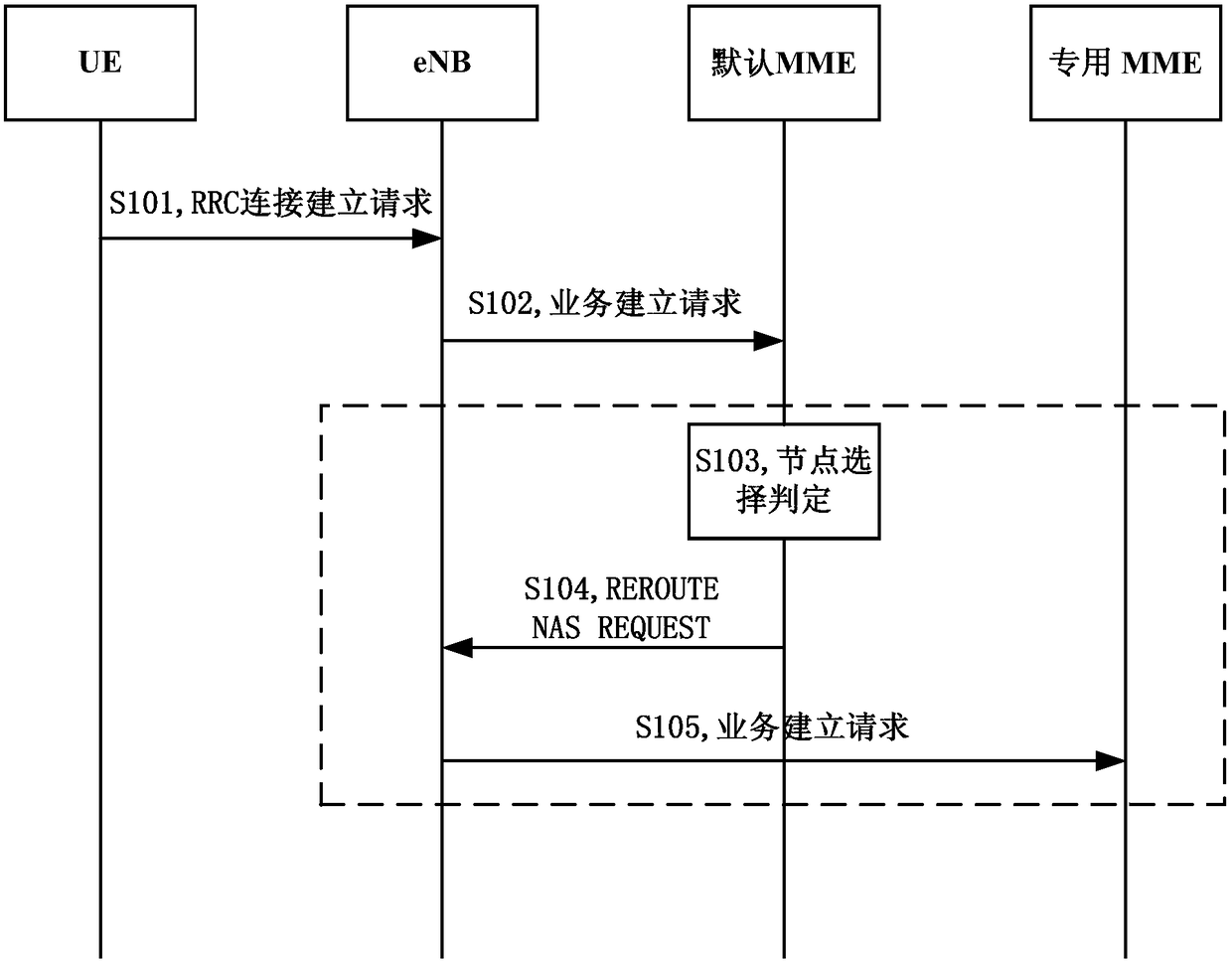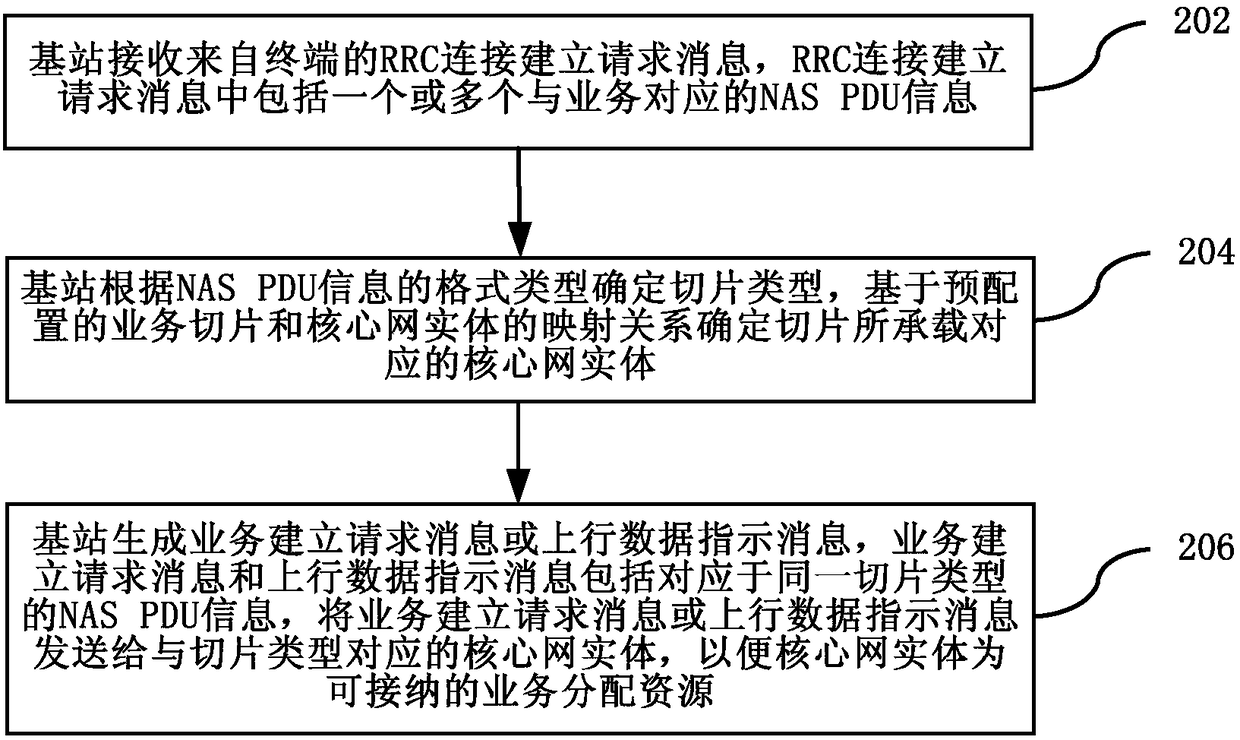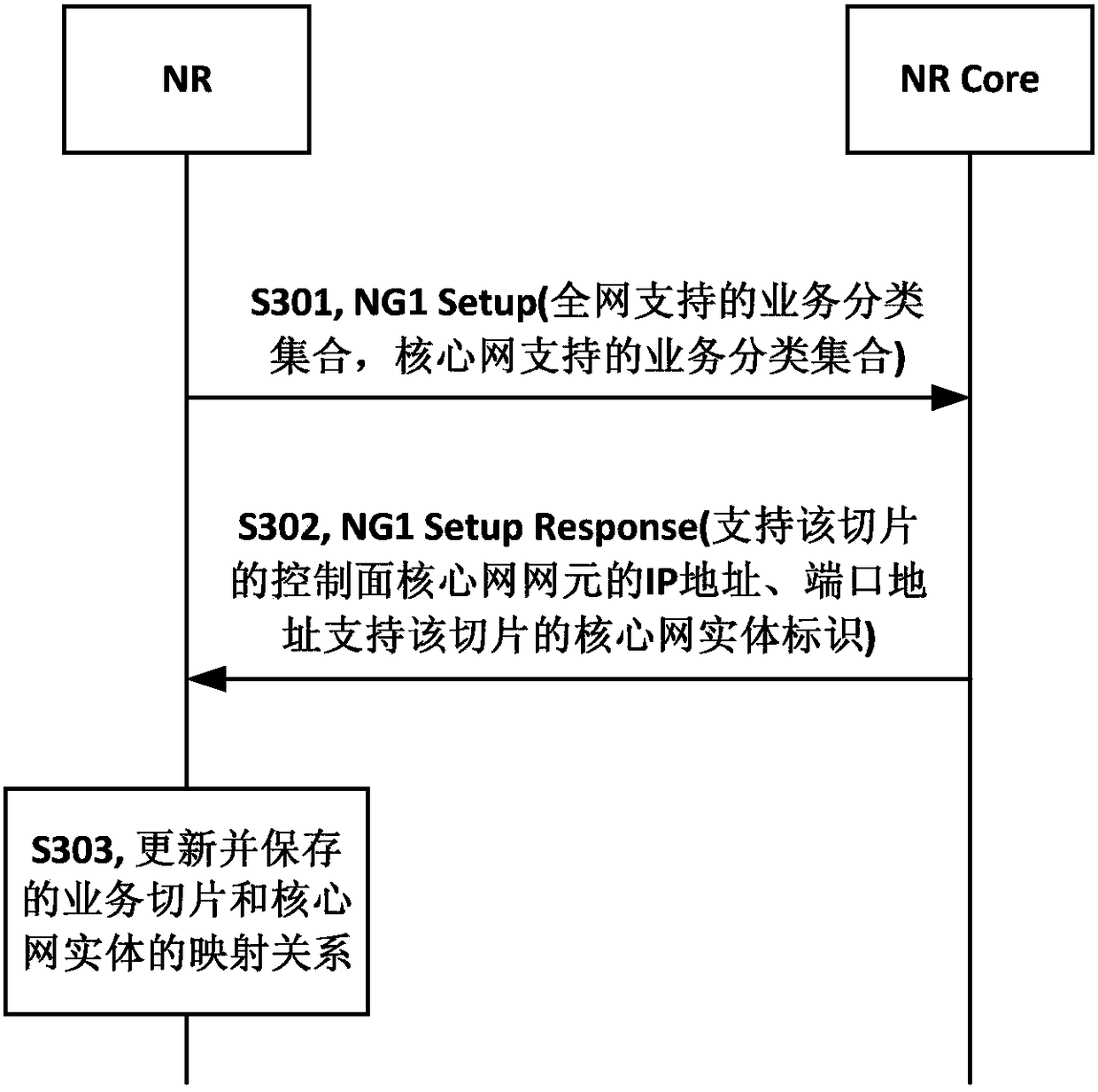Mobile network service adaptation method, device, terminal, base station and mobile communication system
A service adaptation, mobile network technology, applied in wireless communication, network traffic/resource management, electrical components, etc., can solve the problems of the base station lacking the corresponding relationship between the core network and service slices, inability, and increased configuration workload.
- Summary
- Abstract
- Description
- Claims
- Application Information
AI Technical Summary
Problems solved by technology
Method used
Image
Examples
Embodiment 1
[0163] This embodiment combines Figure 5 When a 5G base station establishes an interface with a 5G core network, the core network configures the base station with relevant information about bearer slices. There are three types of service slices supported by the entire core network 500, namely: slice 1: eMBB service, slice 2: mMTC, and slice 3: URLCC service. Each slice on the core network side has the same isolated resources, and each slice has independent control plane and user plane interfaces. The whole system architecture is as Figure 5 shown.
[0164] Step 1: The 5G base station NR sends NG1 establishment request information to the default core network address according to the pre-configuration information, and the establishment request information includes the following information:
[0165] a, service classification set supported by the whole network: 1 (represents a request to obtain the core network configuration information of all services in the whole network);...
Embodiment 2
[0184] This embodiment combines Figure 6Describe the terminal to send an mMTC service, the base station side completes the selection of the core network entity, and the configuration and establishment process of the service in the core network, base station and terminal. The core network has a unified control plane entity 601 for all slices, and the user plane entity 602 is different for each slice. The specific network architecture is as follows Figure 6 shown. The network side defines three service-related NAS PDU formats for eMBB, mMTC, and URLCC.
[0185] Step 1: The terminal side initiates a service establishment request message through the air interface for mMTC services, wherein the request message is encapsulated in a NAS PDU, and the NAS PDU information is carried in the service establishment request message.
[0186] Step 2: After the base station side receives the service establishment request message, it determines that the service is an mMTC service according ...
Embodiment 3
[0205] This embodiment combines Figure 6 Describes the terminal sends an eMBB and URLCC service at the same time, the base station side completes the selection of the core network entity, and the configuration and establishment process of the service in the core network, base station and terminal. The core network has a unified control plane entity 601 for all slices, and the user plane entity 602 is different for each slice. The specific network architecture is as follows Figure 6 shown. The network side defines three service-related NAS PDU formats for eMBB, mMTC and URLCC.
[0206] Step 1: The terminal side initiates a service establishment request message through the air interface for MBB and URLCC services, where the two service request messages are encapsulated in different NAS PDUs, and the two NAS PDU information is carried in the service establishment request message at the same time . The specific message content is as follows:
[0207]
[0208]
[0209] ...
PUM
 Login to View More
Login to View More Abstract
Description
Claims
Application Information
 Login to View More
Login to View More - R&D
- Intellectual Property
- Life Sciences
- Materials
- Tech Scout
- Unparalleled Data Quality
- Higher Quality Content
- 60% Fewer Hallucinations
Browse by: Latest US Patents, China's latest patents, Technical Efficacy Thesaurus, Application Domain, Technology Topic, Popular Technical Reports.
© 2025 PatSnap. All rights reserved.Legal|Privacy policy|Modern Slavery Act Transparency Statement|Sitemap|About US| Contact US: help@patsnap.com



